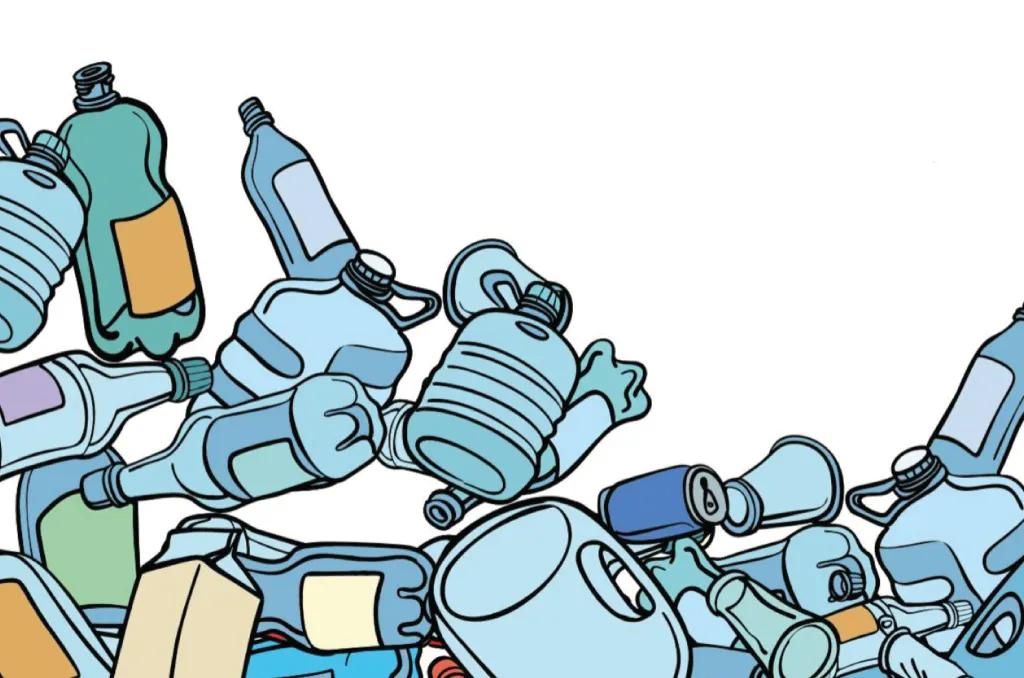Is Plastic Circular Economy the Solution
The management of plastic waste is a big concern. Out of the 6,300 million tonnes of plastic waste generated between 1950 and 2015, only 9% was recycled globally. The global annual generation of plastic is currently around 400 million tonnes, and 86% of this will eventually become waste. In developing countries, plastic waste is mainly disposed of, along with other constituents of municipal solid waste (MSW) such as food waste, paper waste, and glass, in some form of landfill (88% of waste ends up in landfill).
Developed countries, on the other hand, segregate MSW and adopt energy recovery and recycling of plastic waste. In 2018, for example, the European Union recycled 32.5% of plastic waste while 42.6% was utilised for energy recovery.
Yet, 5–13million tonnes of plastic, approximately 1.5%–4% of global plastic waste, end up in oceans as marine litter every year. Plastic, including microplastics (plastics less than 5 mm in size), constitutes 60%–80% of marine litter and poses grave threats to marine life.
Marine fauna is known to ingest microplastics which could block digestive tracts, eventually leading sea creatures to starve and die. Recent studies show that humans may also be ingesting microplastics through seafood consumption.
Plastic circular economy could play a significant role in managing plastic waste sustainably. It promotes and maximises the resource circulation of plastic waste, whereby the waste becomes valuable through reuse and recycling.
Plastic waste can be used to substitute raw materials. Reusing plastic or using recycled plastic is energy saving too as it could reduce the generation of virgin plastic (i.e., new plastic) and even the demand for petroleum, which is used in plastic manufacturing.
Plastic circular economy could be implemented through extended producer responsibility (EPR), a policy approach where manufacturers and importers of plastic products are responsible for their products’ end-of-life management.
By putting the onus on manufacturers and importers in managing their waste effectively, EPR ensures that the price of plastic products incorporates the cost of their safe disposal. EPR can consequently reduce plastic waste disposal, encourage conservation of resources, increase plastic recycling rates, and promote eco-designed plastic products.
Another way to implement plastic circular economy is through a refund system. This involves charging consumers an extra amount for the purchase of a plastic product (e.g., water bottle, container) on top of its original price, and then refunding them that extra amount when they return the product. Sometimes, consumers are rewarded with discount coupons or points after returning the product.
In Japan, for instance, the refund and reward system has been implemented since 2006. Using smart card technology, individuals who return recyclable plastic products to a recycling centre via a vending machine are rewarded with points or coupons that are redeemable for goods in participating supermarkets.
We can also recycle the collected plastic materials through EPR or the refund system. However, issues such as plastic waste contamination, mixed polymer waste, and unknown pro rata composition of mixed polymers pose a challenge to plastic recycling.
Plastic waste could be contaminated when it is disposed of along with MSW. In some cases, plastic waste such as juice bottles or syrup bottles is already contaminated with leftovers.
Plastic products made of mixed or heterogeneous polymers create mixed polymer waste instead. Reprocessing mixed polymer waste poses its own challenges and not knowing the pro rata composition of mixed polymers makes recycling harder.
We must overcome these challenges to implement plastic circular economy more successfully. To reduce the contamination of plastic, for example, we could adopt a stricter policy on waste segregation.
In addition, plastic recycling is not always economically feasible, particularly when obtaining virgin raw material (i.e., petroleum) is much cheaper. Governments could provide subsidies to manufacturers or importers of plastic products to alleviate the cost of labour in plastic recycling.
Further research is needed to improve plastic recycling rates and maximise the potential of recycling. Researchers could look into inventing new recycling techniques, solving the issue of plastic composition, creating automated waste-sorting machines, etc. In the meantime, plastic circular economy provides a sustainable solution to current waste management problems.
Professor Agamuthu Pariatamby
School of Hospitality
[email protected]
This article appeared in Spotlight on Research (Volume 5).




